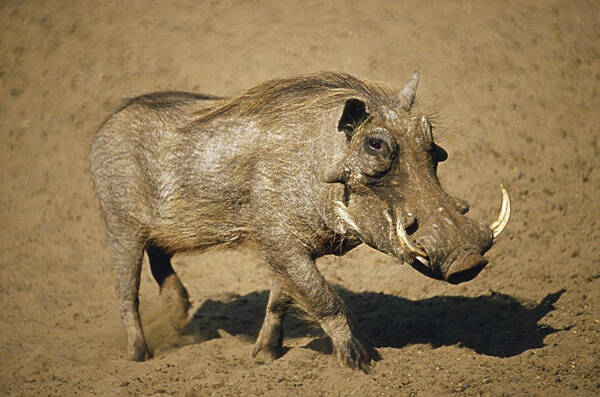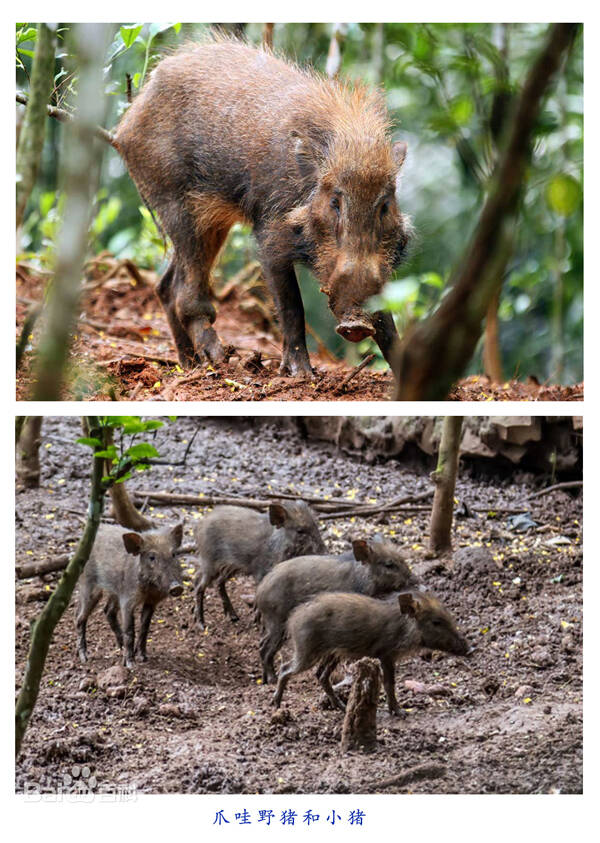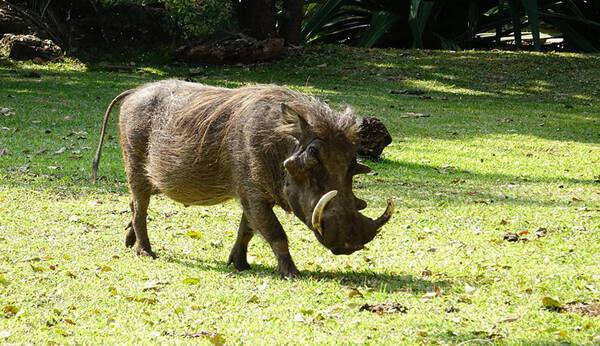Sus verrucosus
IUCN
LCBasic Information
Scientific classification
- name:Sus verrucosus
- Scientific Name:Sus verrucosus,Javan pig、Sanglier pustule,Javan warty pig, warty wild pig
- Outline:Ungulata
- Family:Artiodactyla Suidae Sus
Vital signs
- length:90-190cm
- Weight:35-150kg
- lifetime:8-14years
Feature
There are three pairs of warts on the face, one pair in front of the eye sockets, two pairs infraorbital and a larger pair on the jaw.
Distribution and Habitat
The Javan wild boar is endemic to the Indonesian islands of Java, Bawe and Madura. Historically, the species was found on Java, Madura and Bawe, but today is fragmented into pockets of habitat suitable for survival (2005). It is extinct on Madura (2006). Two subspecies are recognized. The nominate subspecies lives on Java (and formerly Madura). The Bawean subspecies is restricted to Bawean Island in the Java Sea.
The Javan wild boar occurs both in cultivated environments and in teak plantations, with the highest densities between Semarang and Surabaya, on the border between Central and East Java. Data from 2008 indicate that Javan wild boar may be present in large numbers in scattered teak forests and mixed forests with local agriculture near Banjar in West Java.
Appearance
The head and body length of Javan wild boar is 143-190 cm in males and 90-134 cm in females. The shoulder height is 70-90 cm, the male weighs 80-150 kg, and the female weighs 35-60 kg. The tail is relatively long. The male is much larger than the female and about twice as heavy. But both sexes have relatively long legs and straight backs. The body is covered with sparse hair and is usually dark in color, ranging from ocher brown to black, but its underparts are pale, yellow or white. There is a long mane on the back of the neck, extending along the spine to the buttocks, and the mane becomes sparse as it extends backward. The face is relatively long. Males will have very noticeable swollen "warts" under their eyes, under their ears and at the largest angle of their jaw. In young animals, there is a noticeable tuft of hair along the jaw line, where the last wart will appear. The large ears are broad-leaf shaped.
The most striking feature is the growth of three pairs of wart
Details
Javan wild boar (scientific name: Sus verrucosus) foreign name Javan pig, Sanglier pustule, there are 2 subspecies.

Javan wild boars are mostly nocturnal, and damage to rice fields and crops occurs almost exclusively at night. These animals are not very social. Females and their young may be found together, but adult males remain solitary unless breeding. The reason for this shift from a generally diurnal to nocturnal activity pattern may be due to high hunting pressure on the species. No data are available on home ranges or species density. Historically, groups of up to 20 Javan wild boars have been reported foraging together, generally no more than six individuals during the breeding season and fewer at other times.
Javan wild boars raise the long hair on their heads and backs when threatened. When preparing to flee, the tail becomes erect or curved. Harsh alarm calls. These wild boars make piercing whistles to warn each other of danger. They may also use a variety of visual cues and have some tactile communication, especially between pairs, mothers and offspring, and when they are being hunted.
Javan wild boars are omnivorous, but mainly feed on plant foods, including fallen fruits, roots, small mammals, worms and insects. They especially like to eat human crops, mature rice and vegetables.

The gestation period of Javan wild boar is about 4 months, and about 3–9 pups are born per litter. Most births occur during the rainy season from January to March. The most female pups appear between August and December. As with most mammals, care of the young generally depends on the female, who builds a nest for them and takes care of them in groups with other females, while males remain solitary. Piglets are small at birth, weighing between 500-1500 grams. They have light stripes. The young are born in a large nest built by the female on dead branches and leaves, where they stay for a while. The lactation period is about 3-4 months. Males can grow to twice the size of females. Males have warts that form later. Such warts appear on the face with tufts of hair. Females reach sexual maturity at 8 months of age. However, they usually do not reproduce before 1.5 years of age. Males are not able to reproduce until about 5 years of age and are able to compete with females. The average lifespan is 8 years, rarely up to 14 years.
The Javan wild boar occurs in at least 10 isolated localities on the larger island of Java, although other very small populations may exist elsewhere. For example, another pocket has been found at Bangal in western Java, although further survey work is needed to determine the size of the population there. There are no estimates of the overall population size, but the species is declining rapidly. Seventeen of the original 32 wild boar populations (53%) have either become extinct or have been reduced to low encounter rates compared to a survey conducted in 1982.

The decline in the Javan wild boar population is mainly due to the reduction in suitable habitats, especially the reduction in teak forests or similar plantation areas, and high hunting pressure. With the government's mandatory regulations on teak plantations, the adoption of a mixed farming system (agroforestry system) by planting agricultural products between young teak plantations has made teak plantations a suitable habitat for Javan wild boars. However, the availability of this habitat is still threatened by the 35-50 year cycle of logging in teak forests. In any case, there is a significant amount of illegal logging for teak plantations, which has undoubtedly compromised the status of the Javan wild boar. The animals are killed by sport hunters and farmers protecting their crops. Many animals are killed by poisoning. As yet unpublished reports indicate a dramatic decline in the Javan wild boar population on Bawean Island, which has been attributed to the settlement of Christian immigrants from Sumatra and a corresponding increase in hunting pressure; the animals had previously been largely unharmed by the Muslim inhabitants. Competition from and hybridization with Eurasian wild boar are speculated to pose a further threat to the Javan wild boar, particularly in areas where human-induced habitat change favours the survival of Eurasian wild boar, although direct evidence for this and both species apparently occur in some areas, including Bawean Island.
Javan wild boar populations are low in existing protected areas. It is recommended that three new nature reserves be established and two protected areas important for the taxon be expanded. Furthermore, surveys on the extent of market hunting should be conducted with the goal of developing means to regulate or eliminate this practice, and ecological studies and surveys of crop damage should be conducted. Captive animals need to be managed under an appropriate structural program to provide long-term genetic and species statistical advantages for the species. A captive breeding program for Javan wild boars is ongoing and is successfully breeding the species. A second breeding program is in the works. Breeding has been successful to the point where finding a suitable release site has become a priority. However, few people on the large island of Java would be happy to welcome the release of this species in their neighborhood. Therefore, suitable release sites need to be identified in well-managed protected areas or uninhabited offshore islands.
Listed on the IUCN Red List of Threatened Species (IUCN) 2016 ver 3.1 - Endangered (EN).
Protect wild animals and stop eating game.
Maintaining ecological balance is everyone's responsibility!








